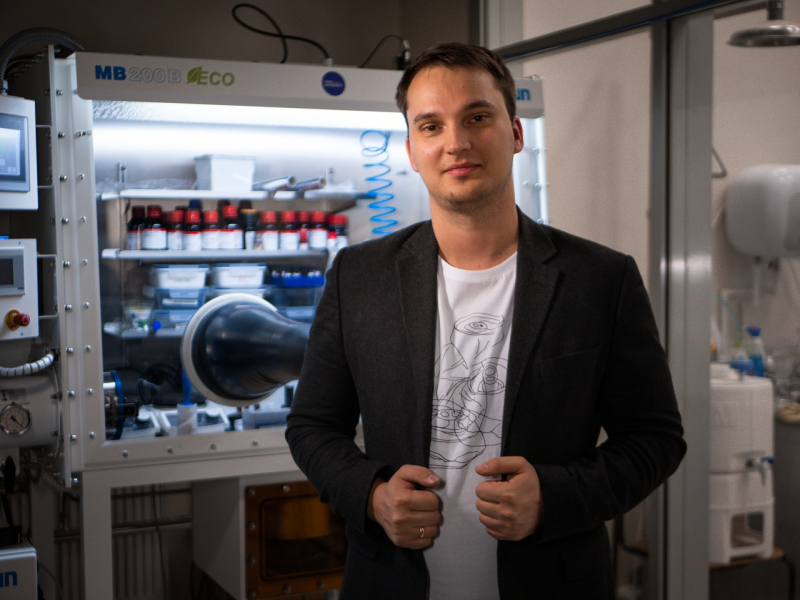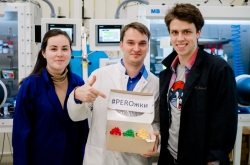In recent decades, there has been a significant increase in interest towards the optical properties of nanoparticles – they open up colossal opportunities in the power industry, medicine, computing technology and other fields. But successful application of nanoparticles for light management calls for a fundamental scientific base which is now being developed by physicists all over the world.
In the last few years, Sergey Makarov, a young physicist at ITMO University and senior research associate at the Faculty of Physics and Engineering, has published a range of experimental papers on the topic of light management on a nanoscale. He proposed using the concept of optically resonant semiconductor nanoparticles and the optical processes occuring in them for a number of applied tasks associated with the development of extremely small optical devices.
The established problem is that in regular material not presented in the form of nanoparticles, many useful optical effects that draw on the use of light energy are very weak. But thanks to optical resonances, the scientist managed to amplify them up to a thousand-fold. It is this work that has been recognized by the President of Russia Award.

“The concept of optical resonances in nanoparticles itself was developed by a German scientist, Gustav Mie, in the beginning of the 20th century, but back then it didn’t have many uses for optical tasks because of the lagging-behind of experimental infrastructure,” shares Sergey Makarov.
He adds that in recent years, together with the active development of nanotechnologies in modern optics there is a clear shift towards using resonance nanoparticles to make all kinds of devices more compact.
“For one, working under the guidance of Yuri Kivshar, professor emeritus at ITMO University, in the early 2010s young scientists from our faculty begun their intensive research into fundamental phenomena in dielectric resonators less than the wavelength of both the visible and microwave ranges,” continues the researcher. “Many amazing phenomena were discovered experimentally, the foundation of which was built by Mie a hundred years ago – this has been a huge collective effort of the entire faculty. The award marks a series of works that I initiated in 2015, in which, the high-performance method developed for creating semiconductor nanoparticles and the relevant resonant effects studied was used to establish a platform for solving a number of related applied tasks.”
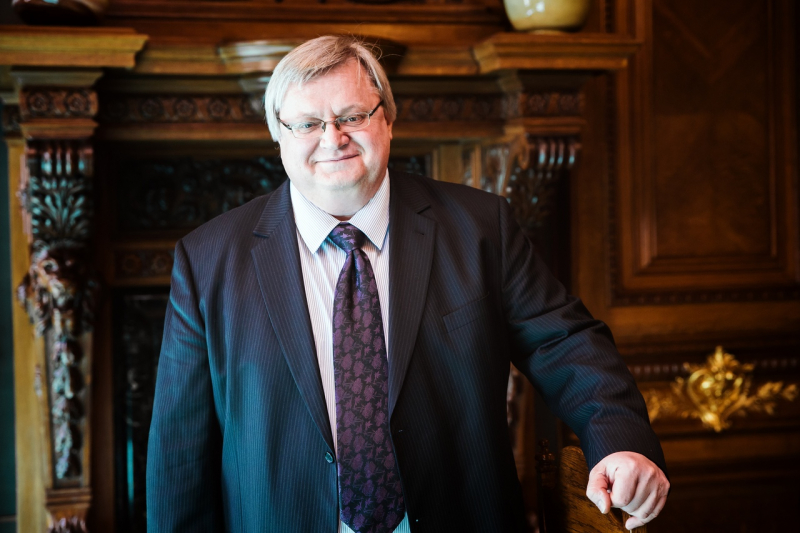
Practical applications
Apart from its fundamental contribution to science, Sergey Makarov’s research and the platform he developed have a lot of potential for an entire range of applied tasks. For example, the scientist was the first to present a concept of an ultrafast optical modulator based on a single nanoparticle. This invention can have a big future before it as it’s potentially applicable to the creation of optical chips and optical computers.
The exchange of data within them occurs not via electrons but via photons. At the same time, they will be able to work tens of times faster than the modern computing devices while consuming less energy. The prototype of the modulator developed by Sergey Makarov demonstrated a response speed of more than 100 GHz.
“I got interested in a range of applications of our works dedicated to silicon nanoparticles, including the prospects for the creation of ultrafast optical modulators based on a single nanoparticle,” notes the researcher. “The fact of the matter is that the creation of optical computers faces a number of potential limitations. People tried to approach light modulation with using metal nanoparticles but the metal caused huge energy losses, the light was getting absorbed and the heating-up effect happened. My colleagues and I proposed to use a single silicon nanoparticle since it has an apposite optical response, it doesn’t heat up but at the same time manages to redirect the light. It has to be mentioned that a light-induced change in its internal properties can lead to significant changes in the direction of scattering. In other words, while usually light falls on it and scatters forward, if you act on the nanoparticle sideways using a special control pulse, it will begin to scatter light backward. What we obtain as a result is an ultrafast nanoantenna that controls the direction of light scattering.”

Near-field microscope
Sergey Makarov and his colleagues also used resonant semiconductor nanoparticles for the creation of a near-field microscope with improved properties. Such a device can operate in all visible light ranges and be used in the solution of a wide range of microphotonic tasks. The scientists’ development has already been implemented and patented.
“When we proposed working with semiconductor nanoparticles, we discovered that under specific conditions, they are able to emit white light, which is extremely bright due to the resonances so we jokingly called them ‘nanolamps’. Why are they interesting? The fact is that white light cannot be compressed or focused on a scale less than a wavelength. Even with the best lens, even the bluest part of the white spectrum cannot be compressed more than up to 400 nanometers in the air. This is called the diffraction limit. But if we have a ‘nanolamp’ of 100–300 nanometers in size, we can bypass this limit from the other side. This can be used to improve near-field microscopes, which are applied in the studies of the optical properties of microobjects.”
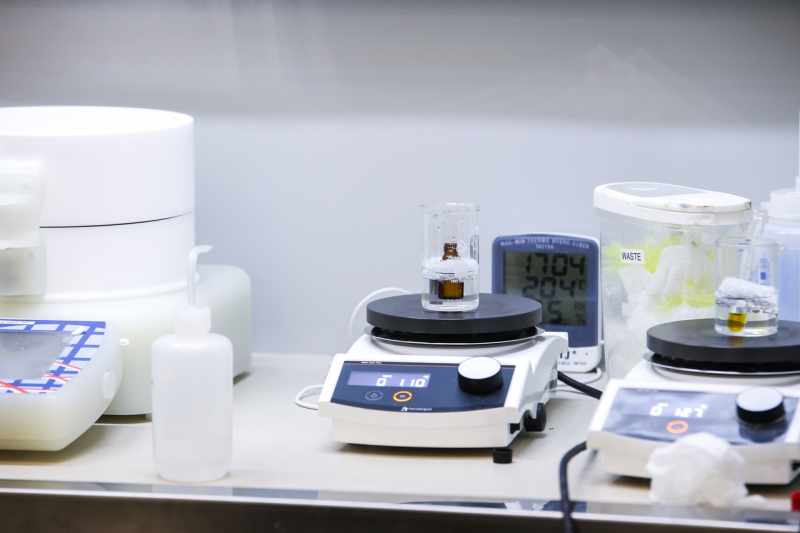
Solar energy and biomedicine tasks
The scientists’ research also found application in solar energy. They demonstrated that resonance semiconductor nanoparticles allow to better capture light in thin-film solar cells, thus significantly improving their efficiency. What’s more, such technology has relatively low production costs.
“We used the nanoparticles’ resonant properties because they have a low level of losses but they also capture light well. The problem with thin-film solar cells is that some of the sun rays get reflected from the former’s surface, or, conversely, pass through them. What we want is for our batteries to absorb the maximum amount of sunlight. This issue can be solved by adding light-trapping semiconductor nanoparticles to the photocell structure. Previously, this involved using metal particles, but they were prone to heating up and, as a result, part of the energy would be spent on heating the device instead of powering it, which could also lead to additional damage. But if we add low-loss nanoparticles, they will trap more light and give everything back to the active material that surrounds them, in our case perovskite. This increases the overall effectiveness of the cell,” explains Sergey Makarov.
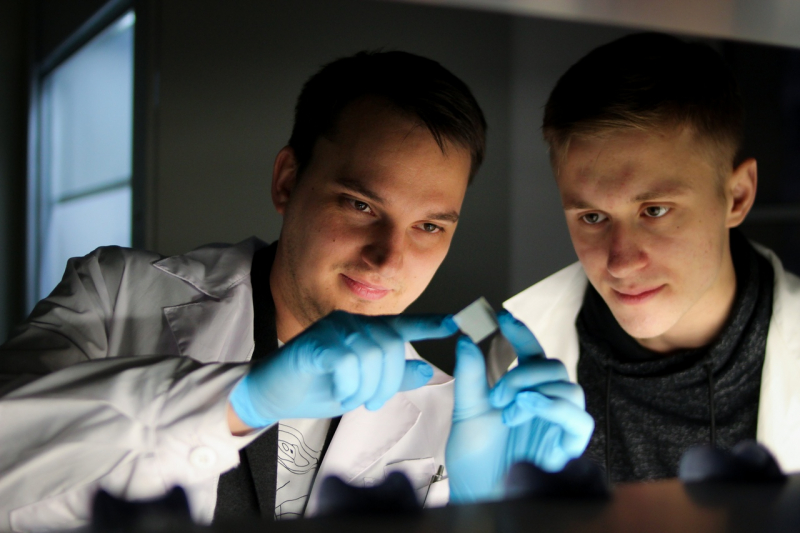
The developed platform can also be used for biomedical tasks, namely being promising for the treatment of oncological diseases. The research confirmed that the nanoparticles allow to locally burn cancer cells with a laser while simultaneously controlling temperature and minimizing the risk of inflicting damage on healthy cells.
“My PhD students, colleagues and I selected the optimal conditions under which our nanoparticles heat up. If this isn’t necessary for photovoltaics, here it can be very useful. We add such a particle to the cell, direct light at it and heat it up so much that the cancer cell in which the particle is ‘sitting’ gets destroyed from the inside. Moreover, the adjacent healthy cells don’t heat up at all. The whole concept consists in simultaneous heating and controlling the temperature. Heating-up is carried out by optimizing a nanoparticle’s resonances at a specific wavelength of light or a laser. We had to choose the right size of the nanoparticles and the right material – this is iron oxide, in other words, ordinary rust. Temperature control is made possible by the fact that there is a dispersion spectrum which we can immediately register when heating-up happens. Based on its change, we can identify the nanoparticle’s local temperature up to the degree. Thus, we’re able to locally heat up and measure the temperature at the same time,” comments Sergey Makarov.
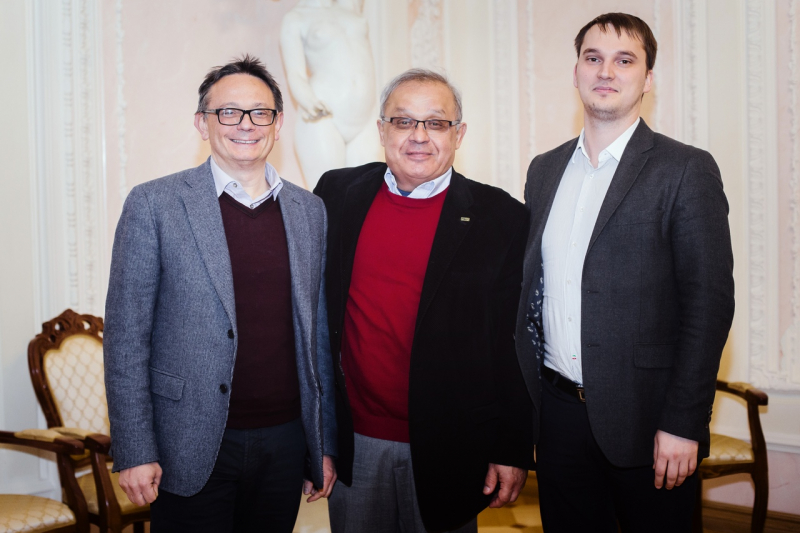
The scientist also highlighted that without the infrastructure and the unique creative atmosphere that developed at the Faculty of Physics and Engineering and ITMO University at large, it would have been impossible to implement the achieved results.
“First and foremost, what has to be mentioned is the colossal support of new research areas by the faculty’s dean Pavel Belov and our scientific advisor Yuri Kivshar. In the last 10 years, they have managed to assemble an outstanding team of motivated young scientists who not only accumulate new knowledge but also generously share it with each other, opening the way to new discoveries. In my case, I’d like to note that at the faculty I have been lucky enough to actively cooperate and develop the concepts that provide the very basis of the results recognized by the award with Valentin Milichko, Dmitry Zuev, Anton Samusev, Alexander Krasnok, Ivan Sinev, Mikhail Zyuzin, Mikhail Petrov, Ivan Mukhin, and many other colleagues. I also owe a lot to my students for their dedication and creativity. They’re all exceptionally talented! And of course, I’d like to give a special mention to the contribution of professor Anvar Zakhidov, who was the one to inspire me to apply the platform I developed at ITMO for the photovoltaic and optoelectronic tasks based on the most advanced materials,” concludes Sergey Makarov.
The President of Russia Award for Young Scientists in the Field of Science and Innovations was established in 2008. The award is annually given to young scientists and specialists for significant contribution to the advancement of Russian science and creation of new technologies aimed at ensuring innovative development of the country’s economy and society and also increasing the country’s defense capacity. An important provision for granting the award is that a candidate be younger than 35 years old.
